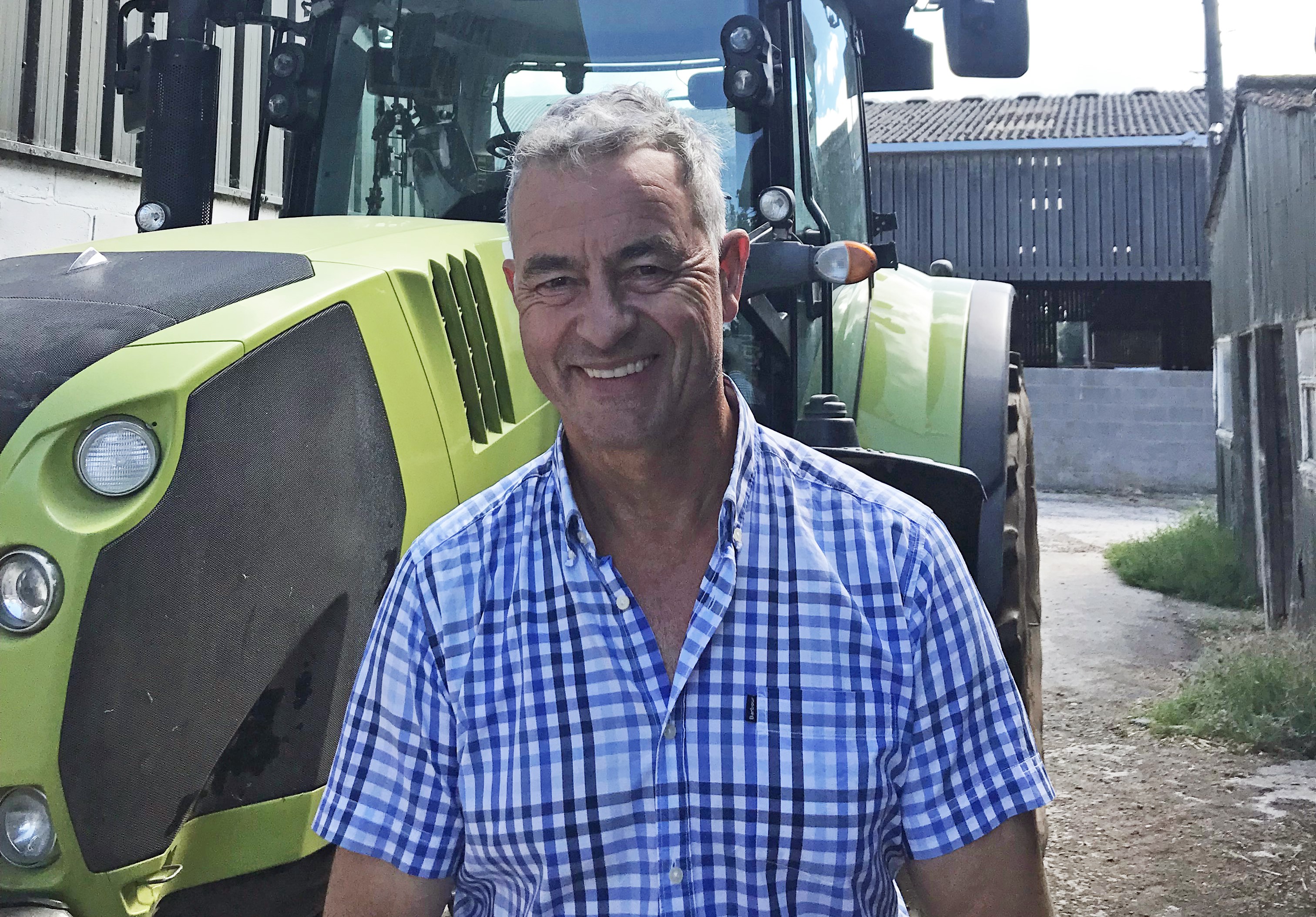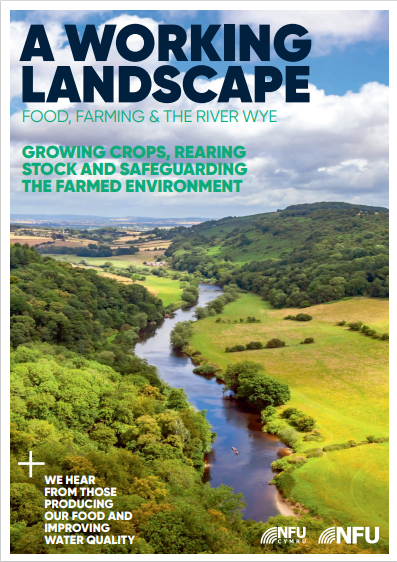Dairy and arable farmer Andrew Giles farms 900 acres at Glasbury-on-Wye and is committed to food production alongside nutrient and soil management.
The 900 acre dairy and arable farm sits on the River Wye, and Andrew has 550 crossbred dairy cattle and grows 50 acres of maize, 80 acres of cereal crops and the remainder is grassland.
Renewable energy
The farm is a rural employer and also generates renewable energy through solar panels on the cattle shed roofs, to supply the milking parlour, farmhouse and a plate cooler that drops the milk’s temperature from 30 to four degrees Celsius so it can be stored ready for collection.
Nutrients
Andrew has implemented several measures and management practices to reduce the risk of over application of nutrients to the crops and therefore risk of nutrient runoff.
The herd is on a grass-based system and they live outside from February to November, when the herd is rotated around 42 paddocks every 12 hours. Andrew practices on-off grazing, this reduces the time cows spend outdoors to no more than three hours in wet weather to avoid soil erosion and runoff through livestock poaching.
Soil testing
Soil testing has been carried out for the past 20 years including for phosphate and organic matter levels, and is used to inform the business’ nutrient management plan. An independent agronomist is also used to help plan crop and soil health management.
The farm team uses a rising plate meter to monitor grass growth, this helps to inform nutrition. Crop and soil records show nitrogen application levels are decreasing, organic matter is stable and phosphate levels are sustainable.
Each year the farm reduces artificial fertiliser application, in the future Andrew plans to make better use of the farmyard manure and cattle slurry produced on the farm to improve crop health. Cattle slurry has naturally low phosphate, medium nitrogen and potash content.
Water
The farm has a spring-fed water supply and that is used to pre-cool the milk, it is then reclaimed and used to wash down the parlour. In order to protect watercourses, rainwater is harvested from roofs and is separated from any dirty water.
The arable operation has moved away from ploughing, fields are now power harrowed, and the seed is direct drilled, to reduce soil erosion and the loss of nutrients. While the maize crop is under-sown with Italian ryegrass, under sowing the crop decreases the risk of bare ground over winter. Maintaining green cover in winter decreases sediment runoff.
The farm has moved from a splash plate slurry spreader to a new trailing shoe spreader that reduces ammonia emissions, odour, and contamination to plant leaves when it is in use. The farm uses a GPS precision farming system to increase the accuracy of application, reduce labour, input costs and nutrient use and the risk of runoff.
Andrew is also part of a local grazing discussion group, who talk about improvements in grass production and animal health.

